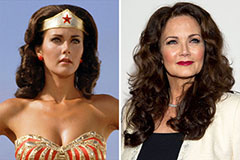Cinematography exists at the heart of filmmaking, transforming stories right into visual masterpieces that astound audiences. With lights, framing, and movement, cinematographers bring a supervisor's vision to life, developing moments that stay engraved in visitors' minds.
Lighting is among one of the most effective tools in cinematography, efficient in forming state of mind, tone, and emotion. Methods like three-point illumination give a balanced method by utilizing a vital light, fill light, and backlight to highlight topics and add depth. Subtle lights, often seen in film noir, produces remarkable darkness and stress, while high-key lighting delivers a softer, a lot more pleasant ambience. Natural light is another favoured choice, typically made use of in independent movies to include credibility and realism. Mastering the interplay of light and shadow is vital for developing aesthetic narration that reverberates emotionally.
Framing and composition are equally important in directing the target market's emphasis and informing the tale aesthetically. The rule of thirds, a foundational technique, helps frame subjects in a way that feels balanced and engaging. Balance and leading lines, on the other hand, draw the audience's eye toward key elements, typically producing striking or dynamic pictures. Depth of field is another crucial consideration; shallow focus highlights a subject by blurring the background, while deep emphasis maintains every component in sharp information, including intricacy to the shot. Each framing option contributes to the narrative, shaping just how visitors regard the tale.
Electronic camera activity improves the storytelling by adding energy, emotion, or viewpoint to scenes. Strategies like tracking shots, where the electronic camera adheres to a subject, submerse the audience in the click here character's journey. Dolly zooms, made renowned in Hitchcock's Vertigo, develop a feeling of anxiousness by concurrently zooming in while the camera moves backward. Handheld shots bring a feeling of raw affection and realism, frequently used in action or documentary-style movies. By integrating illumination, framing, and activity, cinematography comes to be the aesthetic language of cinema, conveying definition and feeling beyond words.
 Richard "Little Hercules" Sandrak Then & Now!
Richard "Little Hercules" Sandrak Then & Now! Robert Downey Jr. Then & Now!
Robert Downey Jr. Then & Now! Nancy McKeon Then & Now!
Nancy McKeon Then & Now! Susan Dey Then & Now!
Susan Dey Then & Now! Lynda Carter Then & Now!
Lynda Carter Then & Now!